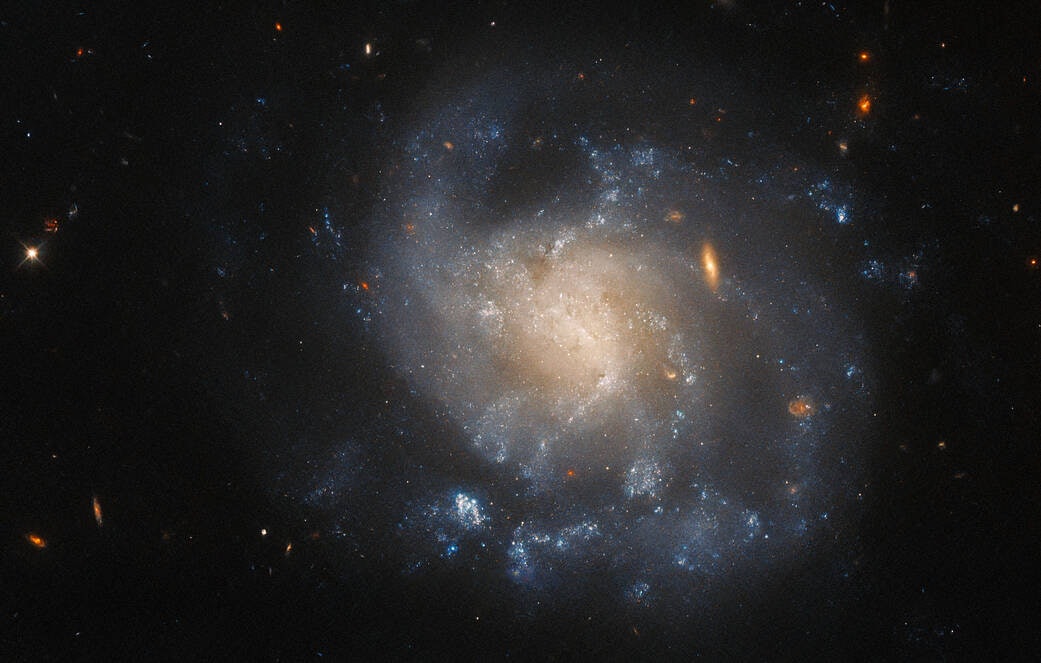
Eight years ago, an astronomical observatory located high on a hill overlooking a region famous for a popular cheese, peered into the constellation Pisces only to discover proof of a star going through a “catastrophically violent explosion” — otherwise known as a supernova.
Later, with the prowess of the Hubble Space Telescope, researchers returned to the scene of the crime to study the debris left behind. They hope these leftovers will provide clues to better understand what causes stars to explode and what happens to everything nearby.
The galaxy, named IC 1776, is located roughly 150 million light-years away from Earth. This fresh image of the galaxy, recently snapped by Hubble from its orbit several hundred miles above Earth’s surface, reveals that the supernova has since faded, leaving behind a galaxy to “stand in splendid isolation.”

How do astronomers classify supernovas?
Monday marks the anniversary of when astronomers classified a visual anomaly in galaxy IC 1776 as a supernova. Once a robotic survey called the Lick Observatory Supernova Search had detected the transient, or short-lived, event in the galaxy, astronomers began to look for more information.
To do this, they first used the Copernico 1.82-meter Telescope. It sits atop Mount Ekar in the Italian region of Asiago, a northeastern part of the country full of hills near the foot of the Alps.
According to a paper published about the supernova, Copernico performed a critical follow-up step to help astronomers learn about the star that had exploded to form this object.
From an altitude of 4,500 feet, roughly comparable to triple the height of the Empire State Building, Copernico looked at supernova SN 2015ap and gathered what’s known as a classification spectrum. This is a way of turning light data into other information. Since different elements give off different emission lines, astronomers gather light from a distant source and then work backward. In this case, Copernico’s data suggested the supernova was a category Type Ib. Swinburne University of Technology in Australia defines Type Ib supernovas as those created when a massive star loses its outer shell of hydrogen, followed by its core collapsing.
Again the blast, which space agency officials call “catastrophically violent,” is no longer visible in this image. But Hubble investigated the galaxy in the aftermath of the supernova during two different observing programs, officials write. Both of these surveys were “designed to comb through the debris left by supernovae explosions to better understand these energetic events.”
Observations complement one another and lead to robust classifications. Ultimately, these “cosmic cataclysms” become less mysterious the more astronomers learn about them, but never enough to lose their allure.







